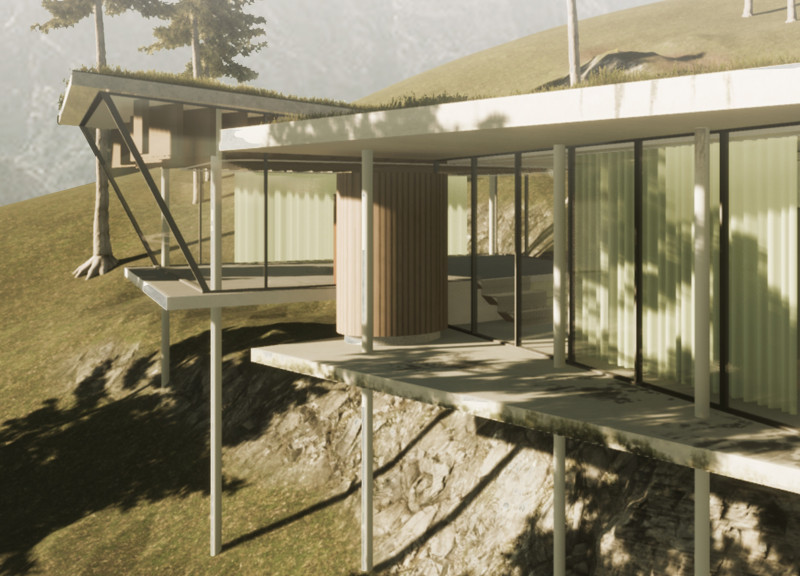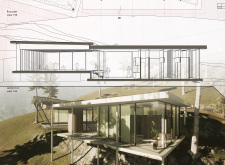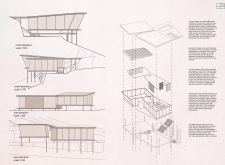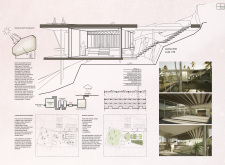5 key facts about this project
The project presents a contemporary architectural design that emphasizes functionality while integrating seamlessly with its surrounding environment. This development prioritizes the needs of its users through intelligent space planning and innovative use of materials, making it a noteworthy contribution to the collection of modern architecture.
The design emerges from a comprehensive understanding of the geographical context, enhancing the project's relevance to its locale. It features an open-plan layout, promoting versatility in use and allowing for natural light to permeate the interior spaces. The exterior showcases a harmonious blend of contemporary aesthetics and practical elements, ensuring both visual appeal and durability. The primary function of the structure serves both residential and communal purposes, thus fostering a sense of community among users.
Innovative Use of Materials
The project's uniqueness lies in its careful selection of materials, which include reinforced concrete, sustainable timber, and large expanses of glass. Reinforced concrete provides structural integrity and resilience, while the incorporation of sustainable timber introduces warmth and tactile qualities to the design. Large glass panels create a visual connection between interior spaces and the exterior environment, effectively blurring the boundaries and enhancing the overall user experience.
This architectural design foregrounds sustainability as a core principle. Large overhangs provide shade, decreasing the reliance on artificial cooling systems. Additionally, the integration of green roofs contributes to energy efficiency and biodiversity. The choice of materials reflects a commitment to environmental responsibility, with a focus on local sourcing to minimize the project's carbon footprint.
Spatial Organization and Functionality
Careful consideration has been given to the spatial organization, with defined zones for living, working, and socializing. Each area is designed to maximize usability while maintaining intimacy. The living spaces are strategically aligned to capture natural light, enhancing the ambiance during different times of the day.
The project's design also fosters interaction among inhabitants through communal areas that encourage social engagement. Flexible spaces can adapt to various functions, from informal gatherings to more organized community events. This adaptability is enhanced by modular furniture that supports different seating arrangements as necessary.
Overall, this architectural project represents a forward-thinking approach to design, one that prioritizes user experience, sustainability, and community engagement. Readers are encouraged to explore the architectural plans, sections, and detailed designs further to gain insights into the specific elements that contribute to the project’s functionality and aesthetic appeal.






















































